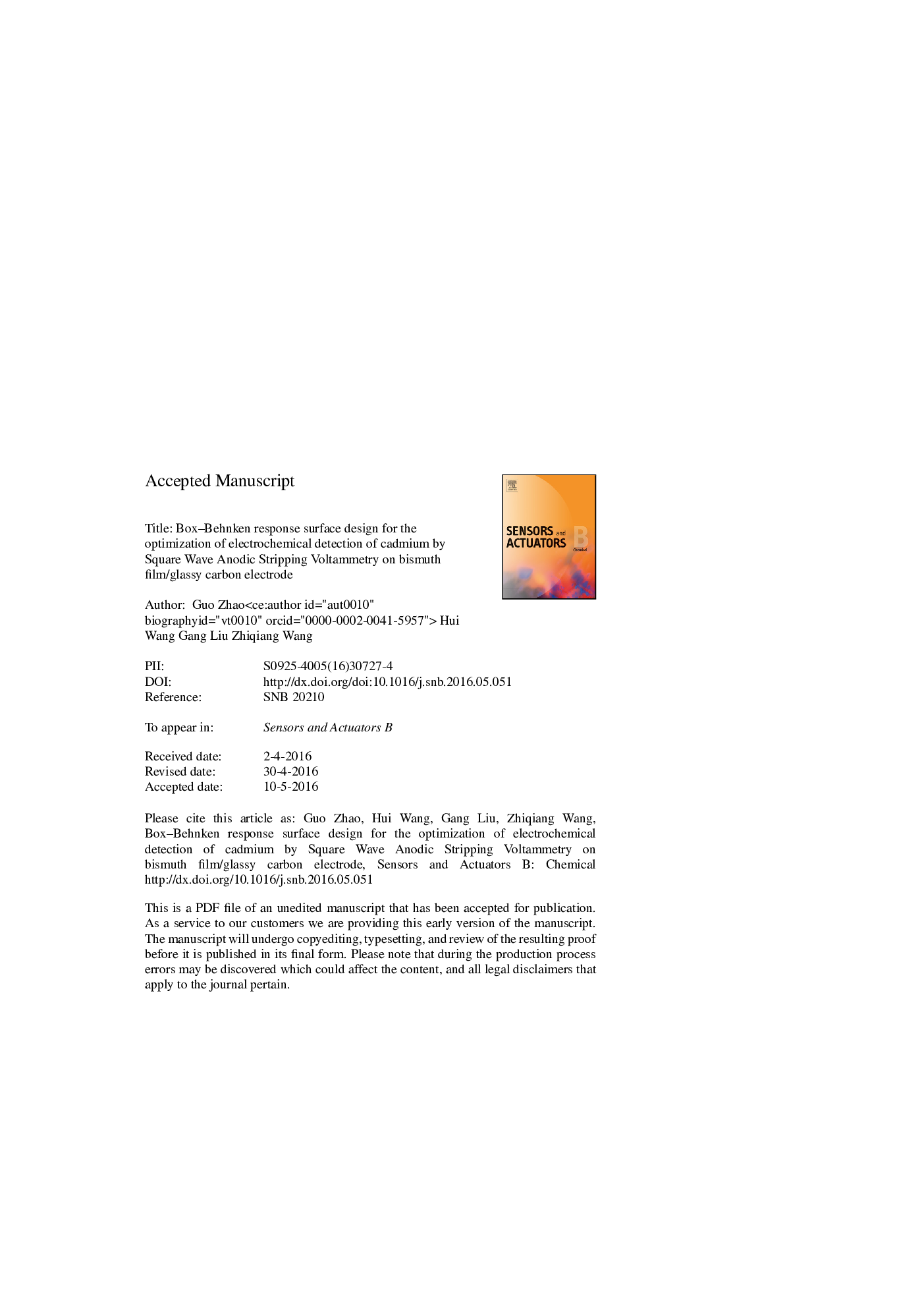| Article ID | Journal | Published Year | Pages | File Type |
|---|---|---|---|---|
| 7142852 | Sensors and Actuators B: Chemical | 2016 | 28 Pages |
Abstract
In this paper, a Box-Behnken design (BBD) was conducted and the response surface methodology (RSM) was employed to investigate the influence to different parameters to Cd(II) detection at bismuth film/glassy carbon electrode (Bi/GCE) by Square Wave Anodic Stripping Voltammetry (SWASV), and the stripping peak current was used to evaluate the detection performance of each parameter combination. A three-level-three-factor full factorial (33) BBD has been conducted to investigate interaction effects. The relationship between stripping peak current and the three factors was quantitatively described by a multivariate regression model through the RSM. The optimal parameter combination within the studied experimental range was obtained to improve the detection performance, considering the interaction effects among Bi(III) concentration, pH and deposition potential. Under the optimal parameter combination, SWASV was applied to detect the concentration of Cd(II) on Bi/GCE, the linear calibration curve ranged from 1 to 170 μg/L with a detection limit of 0.3 μg/L (S/N = 3). The proposed analytical procedure was further applied to detect trace Cd(II) in soil samples with satisfactory results.
Keywords
Related Topics
Physical Sciences and Engineering
Chemistry
Analytical Chemistry
Authors
Guo Zhao, Hui Wang, Gang Liu, Zhiqiang Wang,
